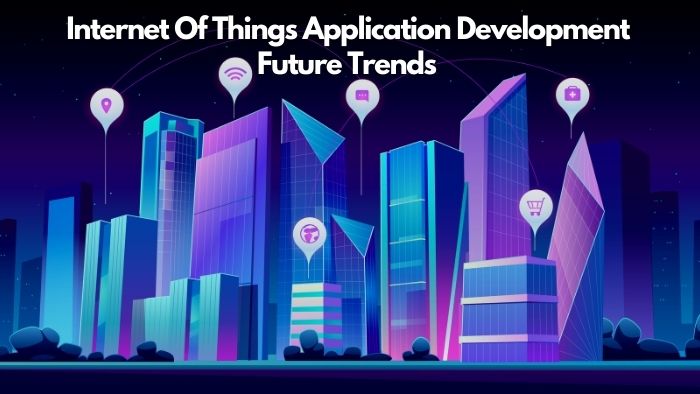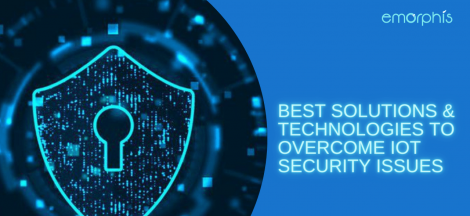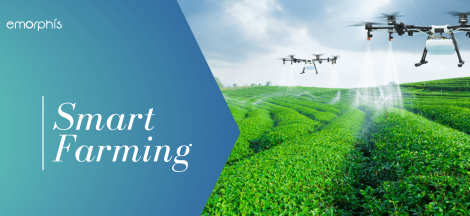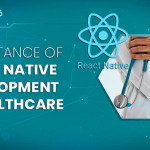Introduction
The Internet of Things (IoT) is a future-based technology that is turning into reality with each passage of time. Likewise, there is a surge in taking the help of the Internet Of Things or IoT application development services in every aspect of the business.
Recently several statistics have pointed toward a bright future in Internet Of Things application development. Some of the statistics that support it are:
- The market of IoT devices will achieve a goal of $1.3 billion in the coming 2026
- There is a steady growth in the number of IoT connections that will top 83 billion by 2024
Important to realize, that if you have decided to give a thought to creating an IoT app, it's the correct time to focus on it and conduct deep research. Are you cramped with time constraints? There is no need to worry!
Question to raise
Surely and steadily, we will inch closer to understanding the research procedure. Hopefully, the given article will help the readers to get answers to the following questions:
- What are recent trends that define IoT in 2022?
- What features will define IoT in the long run?
- How to develop an IoT app for an industry?
- What should be the range of IoT app development costs?
What is the Internet of Things?
In short, IoT is the collection of billions of devices connected via the internet to share data and information across it. Thankfully, the presence of wireless networks and computer chips (cheaply available ) has made something unthinkable! How?
In the first place, they have converted every information about things ranging from as small as medicine to as large as aircraft into a crucial part of IoT. Afterward, the addition of sensors is what makes a dumb device into an extraordinary one.
Hence, the arrival of IoT has woven a smarter and more responsive digitalized world around the people!
Exclusive Features That Define IoT
Indeed, every system is defined by its unique features, and IoT is no such exception. In addition, almost all systems need to be conceptualized in an environment that includes certain properties that demonstrate the credibility of an app.
Some of the essential Internet of Things (IoT) app development features are as follows:
A. Connectivity
In this case, the proper execution of business use cases is possible when there is uninterrupted communication between different IoT components (data hubs, sensors, etc.)
Moreover, several devices interconnect multiple IoT devices. They include Bluetooth, Wi-Fi, radio waves, and many more. Furthermore, it is also possible to leverage protocols of the internet connectivity layer to create a generic connectivity platform across the IoT ecosystem.
B. Integration
At this instant, IoT is known for enriching the user experience. How? It's simple; by integrating various cross-domain models. In this way, there is an assurance of proper coordination between operational and infrastructure costs.
C. Analyzing
As a result of proper connectivity, the time is to have a proper analysis of real-time data and utilize it to develop proper business proficiency. An IoT system is smart if it offers good insight from the customer's data.
D. Sensing
So, sensor devices are an integral part of IoT technologies. They assist in detecting and measuring any slight changes in the working environment and immediately report their status. Consequently, IoT apps focus more on active rather than passive networks.
E. Active Engagement
To begin with; IoT devices focus on combining several platforms and services together to launch an active engagement between different systems. Even more, the use of cloud computing helps in establishing an active engagement among several IoT ecosystems.
F. Dynamic Nature
By the way, the first thing IoT app developers must do is to collect raw data, and subsequently, convert it into a meaningful one. Eventually, it will assist in making correct business decisions.
G. Safety
The vital feature of any IoT ecosystem is data safety. Incidentally, the passage of sensitive data starts from one another endpoint via connectivity components. Besides, it also comprises firewalls, security, and other safety measures to protect against the failure of the pipeline.
How to Build IoT Applications?
If you are preparing to develop your business IoT app, then you must know that it is not an easy procedure. Just like mobile apps, it is also a complex procedure, albeit at a higher level.
Nevertheless, if you have a good affinity with mobile apps, then designing an IoT app for your business will be a straightforward thing for you. Moreover, certain aspects are similar for both mobile app and Internet Of Things application development. They are:
- Designing the prototype and verifying it with the customers
- Use appropriate tools to translate the design into the code
- Testing application in a live environment
- Deploy app in mobile stores
- Offering maintenance and update
However, developing an IoT-based app requires two things:
- Robust back-end systems
- Behind-the-scenes account
Another key point, several smart gadgets have sensors and actuators that transfer data to the server side (back-end) to develop innovative web applications. So, in a gist, developing an IoT app needs creating first a mobile app with server-side features.
Notably, here comes the main part: What are the crucial steps to developing a fully functional IoT application?
Step 1: Choose a Platform that Supports your Technology
Although numerous platforms assist in building IoT applications, we still have to take a cautionary note:
Give proper attention to the technologies that support your system, and how much they will cost for an enterprise.
So, there are an ample number of platforms on which creative IoT apps are built:
- Android Things
- HomeKit
- Ubidots
- ThingWorx
After all, consumers can select them and use them to solve the issues related to inconsistency. In this way, IoT app developers can connect devices from several vendors working on different protocols and unify them on a single system.
For instance, Android Things (an IoT platform of Google) now supports devices from several manufacturers. Besides, it also connects easily with low-energy sensors. Taking another example, Apple's HomeKit comes with numerous devices that effectively connect not only with IoT systems but also with guidelines essential for creating IoT software.
Step 2: Choose the Hardware that Meets the Technical Expectations of the Users
Instead of developing your hardware, if you are focusing on the selection of the best available one; then you should follow these two essential steps.
At first, the given chosen hardware must successfully meet the demands of your products well. Secondly, it should be a reliable one because it will impart accuracy to your project and result in its prosperity.
Step 3: Think in Advance about the Scalability of Apps
To develop the functionality of an IoT app; the developers must be cautious about the pace to accomplish it accordingly. How to make it happen? The answer is Scalability.
Why is it crucial for proper IoT app development? It's because scalability defines the relevancy of your app. Moreover, it has the caliber to manage increasing data workloads on multiple devices and processes simultaneously.
So, for this reason, cloud technology is the best solution to create a perfect IoT app.
Step 4: Securing IoT System from Get-Go
In this case, for any IoT application, giving proper attention to security is a must, which no developer should deny at any cost. Unfortunately, IoT technology is rather vulnerable. Why? It is due to the presence of numerous connected devices working in a single network that makes IoT devices are more prone to theft.
The point often overlooked, it has a serious impact on areas where IoT finds the most usage- healthcare services, cars, and even homes. That is to say, such online attacks make things more miserable as they expose the private and sensitive data of customers to online intruders.
Saftey Tips for IoT App
So, you must make sure to include security tools to enhance the safety aspect of your IoT application. In this case, there are a few tips that will ensure your IoT app will remain safe for a longer time:
- Carefully choose reliable hardware vendors
- Use only IoT platforms that have a proven track record of regular testing and updating tools
- Only use encryption-based cloud networks
- Focus not only on network attacks but also on physical attacks and ensure it is difficult to remove data from storage
Step 5: Phase by Phase Test All Components of your IoT Product
Once, you have selected a suitable platform and also, weigh security options, the time has arrived to test the applications. As per your imagination, there are certain aspects that you should keep in mind to build a suitable ecosystem for several platforms (both web and mobile).
I. UI/UX
During the designing phase of IoT apps, one must focus on the inclusion of customer-facing components such as web and mobile app interfaces. Why? It's because they help in data visualization.
Further, it is essential to verify and test the UI/UX consumption with the consumers through interactive prototypes. It helps in enhancing user experiences to create a loyal base among them.
One thing to note:
By all means, the users can safely stick with their default UPI present in the admin portal that will be internally managed by the employees.
II. Code
So, when your IoT app developers combine a line of codes to create an application, you must ask them to leverage 3rd party SDK and APIs to enhance the whole procedure for Internet Of Things application development.
On the other hand, there is the availability of several pluggable components and frameworks that developers can use to test and create innovative mobile applications. Likewise, they can prioritize the use of the back end and APIs to develop a mobile app at a fast pace.
III. QA
Another key point, Internet Of Things application development (IoT app development) implies continuous testing. So, there must be verification of all the components of IoT with a solid QA strategy. It must include automated tests in code during the development phase.
Furthermore, the QA team must include the following testing strategies to maintain the equilibrium:
- Performance Testing
- Security Testing
- Usability Testing
- Scalability Testing
- Compatibility Testing
Step 6: App Deployment to Make it Readily Available to Users
After undergoing deployment and testing the IoT app, it is now available for customers. Therefore, it is a ripe time for an IoT app development company to transfer the web app to the live environment. It will be possible through the App Store and Google Play.
Lastly, the developers must ensure the inclusion of DevOps practices and tools to prepare a perfect set-up for the public release of IoT apps. They will help in implementing the new version quicker with no interruption due to automation.
Step 7: Maintenance with Regular Updation Must be an Integral Part
After releasing the app, the companies must not rest on their achievements. Instead, they must focus on accessing customer feedback. Hopefully, it will help in understanding issues faced by the customers that can be settled through minor updates or adding new features.
Internet Of Things Application Development Trends To Watch in 2022

The year 2022 is turning out as an eventful one for IoT companies. Moreover, several trends are also pointing towards the complete dominion of IoT apps in the business world. Many end-users and vendors must be keen to know and even want to capitalize on the latest trends to make their smart cities project successful.
Here, there are some of the IoT technological trends that technology lovers and entrepreneurs must have a strict vigil:
1. IoT will Evolve as a Sustainable & Greener Technology
At present, there is a rising demand to opt for a green economy. Optimistically, IoT technology has the potential to include green solutions in smart cities to accelerate a high level of sustainability. Eventually, it will be beneficial because:
- There will be a reduction in energy costs
- Better monitoring for failure points
- Enable remote deployments
So, the main objective of opting for green energy optimization is to integrate it with any feasible model to convert the global economy into a more sustainable one.
2. IoT Platform will Gradually Shift from Cloud to Edge
Though edge platforms are still in their nascent phase, the year 2022 will bring laurels to them, especially for those using IoT technology.
Why are they in much demand?
The answer is that, unlike cloud technologies, edge platforms can be grouped into:
- Types of hardware, cloud platforms, and edge applications
- Core business: hardware, software, and cloud vendors
Presently, most entrepreneurs require hardware-specific platforms such as edge computing. Why? It's because they create tight-knit integration between management platforms and hardware to offer innovative solutions when a problem arises. Therefore, the latest IoT trends are seeing tech enthusiasts moving toward edge platforms with more and more hardware vendors winning the battle in the long run.
3. Rise of Cloud-Native Applications
For the next several years, major IT companies are implementing cloud technologies to increase capabilities and efficiencies. For a decade, the cloud market has been growing at a faster pace. However, the recent pandemic has accelerated the demand for cloud applications.
As more and more industries are opting for new technology, a whole new way of cloud apps is getting incorporated at a large scale. For example, there is a massive upgrade going on leading to a surge in the expansion of cloud-native apps. Especially, communication service providers (CSP) are including digital transformation strategies such as cloud-native apps. Notably, Vodafone is launching a partnership with Vmware to create a single 5G platform over its Europe operating area.
4. AI is Increasing Finding more Prominence at Thin Edge
Initially, several organizations are perplexed about where to place AI, either in the cloud or on edge. Nevertheless, the recent trend is showing that AI-based edge applications are shifting towards a thin edge. Why?
Two crucial developments point toward the arrival of the recent phenomenon:
- Of late, there has been the development of low-cost semiconductors. Moreover, it permits putting AI closer to the smallest part of the device. So, a large number of IoT-based micro-controller are putting AI within their system that will come in handy in designing smart city
- In the last five years, AI algorithms have become more powerful and have resulted in a decrease in the need for less computing power as the thin edge will be capable of fulfilling the given need easily
5. A Big Push Towards 5G
Earlier, many pundits consider 5G merely a mechanism for downloading content at a faster pace. Nowadays, most industrial companies prefer those private networks that run on 5G. By supporting it, smart city projects will surely benefit more.
Such is the power of 5G that every IoT application development company is vouching to run on it. Why such special treatment?
It is because every company needs to take its connectivity to the next generation. Moreover, they have to take into account designing, testing, and even launching the sensors and devices running on IT. So, a combination of IoT with the actual capabilities of 5G creates a super-power technology that has the quality to transfer a large amount of data across channels swiftly. Therefore, IoT devices are improvising towards faster connectivity, all thanks to 5G.
What is the Cost of Developing an IoT App in 2022?
For any application, the development procedure is quite similar. First, there is the finalization of an idea. Afterward, there is market research with the preparation of the budget. Thereafter, a proper cost calculation is done that will be crucial to achieving success for the project.
Below you can see Internet Of Things application development cost dependency.
Similarly, for IoT development, the formulation of the development budget depends on the following viral factors:
- Association of complexity in the features of IoT apps
- IoT UX complexity
- UI Requirements
- Types of working devices
- Operating System and API integrations
- Multiple locations
As usual, there is a need to build hardware for IoT applications from scratch. In that case, one must bear in mind that IoT app development costs will also include expenses associated with analysis, modeling, prototyping, and even testing. Furthermore, creating an IoT product comes with planning for custom digital infrastructure that will also include IoT networks and middleware. In addition, there is a variation in complexity associated with the utilization of the type of application.
Timeline of Creating an IoT App
So, in the Internet Of Things application development process, there are three essential aspects:
a. Designing:
The given stage comprises the requirements of the clients and the creation of the project layout. Moreover, it usually takes about 80-300 hours for completion.
b. Development
During the given stage, there is the inclusion of new technologies to create harmony between an ample number of features. However, it is also the phase where there is the consumption of a large amount of time. Here, the completion time takes around 500-1000 hours.
c. Testing & Post-Development
The given stage is essential as here, the chances of finding a hidden bug are high. Besides, several app development companies are focusing on post-development services to retain loyal client relationships. Normally, it takes around 100 hours to complete.
Nevertheless, the construction of an IoT app also varies with time. It can be explained as follows:
- With standard UI functionality: 400-600 hours
- Custom-made UI functionalities: 700-800 hours
- Complex functionalities with 3rd party integration: 1100 hours
Development Costs: Simple to Complex One
Usually, the cost of a simple IoT app which is devoid of extra features and comes only with a basic one has a general development budget that starts initially from the US $30,000.
In the case of complex IoT apps, there will be the presence of a large number of advanced features such as GPS tracking, 3rd party API, and security tool integration. So, the development cost of a complex IoT product will be around $50,000 (minimum). In contrast to this, the average cost of Internet Of Things application development (IoT app development) will range from $10,000, and $50,000. The cheapest one will be the IoT-based monitoring system that is used by media and comes up to $10,000.
Approximate costs of IoT apps
Likewise, if one takes into consideration the approximate costs of IoT apps for home automation, smart cities, and manufacturing, then it will be estimated at around $50,000.
Furthermore, when geographical locations are taken into account, then the hourly charges for IoT app developers will vary from (in US$):
- North America: $50-150/hour
- Western Europe: $60-130/hour
- Eastern Europe: $30-50/hour
- India: $20-50/hour
Final Words
So, IoT is a futuristic technology that is transforming numerous industries in a way that no one has ever foretold. Furthermore, growth in the number of IoT devices will create more opportunities for IoT-based start-ups to leverage them more proactively.
To the delight of Internet Of Things application development or IoT app development companies, by the year 2025, consumers will spend four times more on IoT solutions than they have usually spent in 2021. Hopefully, the given blog will offer a perfect glimpse of the steps taken to build an IoT app and the costs associated with developing it from a simple to a complex one.
Emorphis Technologies is 'India's top recommended IoT company' offering varied solutions for IoT consulting and IoT app management. If you have any queries regarding IoT app development, please feel free to ask any questions from our team.







